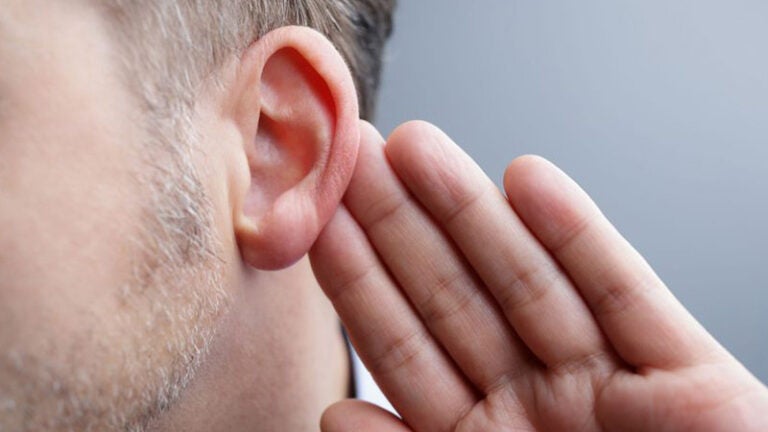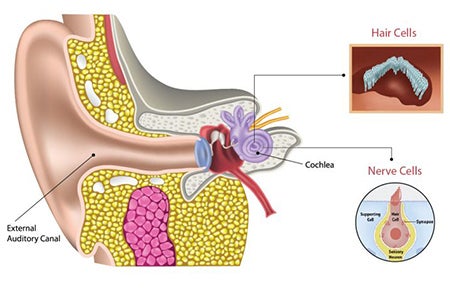
Hearing loss study shows hope for millions
Researchers have developed a new approach to repair cells deep inside the ear — a potential remedy that could restore hearing for millions of elderly people and others who suffer hearing loss.
The lab study, conducted by scientists at USC Dornsife and Harvard University, demonstrates a novel way for a drug to zero in on damaged nerves and cells inside the ear. It’s a potential remedy for a problem that afflicts two-thirds of people over 70 years and 17 percent of all adults in the United States.
“What’s new here is we figured out how to deliver a drug into the inner ear so it actually stays put and does what it’s supposed to do, and that’s novel,” said Charles E. McKenna, professor of chemistry at USC Dornsife and a corresponding author for the study. “Inside this part of the ear, there’s fluid constantly flowing that would sweep dissolved drugs away, but our new approach addresses that problem. This is a first for hearing loss and the ear. It’s also important because it may be adaptable for other drugs that need to be applied within the inner ear.”

Image by Matthew Savino
The paper was published April 4 in the journal Bioconjugate Chemistry. McKenna co-authored it with David Jung of Harvard Medical School, among others. It is the latest achievement in USC’s priority program to advance biomedicine, including the recent launching of the USC Michelson Center for Convergent Bioscience. The Michelson Center unites USC experts across disciplines to solve some of the most intractable research challenges related to health at the molecular level. The facility will house the new USC Center of Excellence in Drug Discovery, with McKenna as its director.
Caveats for consideration
The research was conducted on animal tissues in a petri dish and has not yet been tested in living animals or humans. Yet the researchers are hopeful given the similarities of cells and mechanisms involved. McKenna says since the technique works in the laboratory, the findings provide “strong preliminary evidence” it could work in living creatures. They are already planning the next phase involving animals and hearing loss.
‘Hidden hearing loss’
Hearing loss is projected to increase as the U.S. population ages. Previous research has shown that hearing loss is expected to nearly double in 40 years. Damage to the inner ear can lead to “hidden hearing loss,” which is difficulty hearing whispers and soft sounds, especially in noisy places. The new research gives hope to many eager to avoid loss of hearing and quality of life.
The authors include lead researcher Judith S. Kempfle as well as Christine Hamadani, Nicholas Koen, Albert S. Edge and David H. Jung of Harvard Medical School and The Eaton-Peabody Laboratories in Boston. Kempfle is also affiliated with the University of Tübingen Medical Center. Corresponding author McKenna as well as Kim Nguyen and Boris A. Kashemirov are at USC Dornsife.
This work was supported by the American Academy of Otolaryngology-Head and Neck Surgery Herbert Silverstein Otology and Neurotology Research Award, the American Otological SocietyResearch Grant and by a $567,783 grant from the National Institute of Deafness and other Communicative Disorders (R01 DC007174).